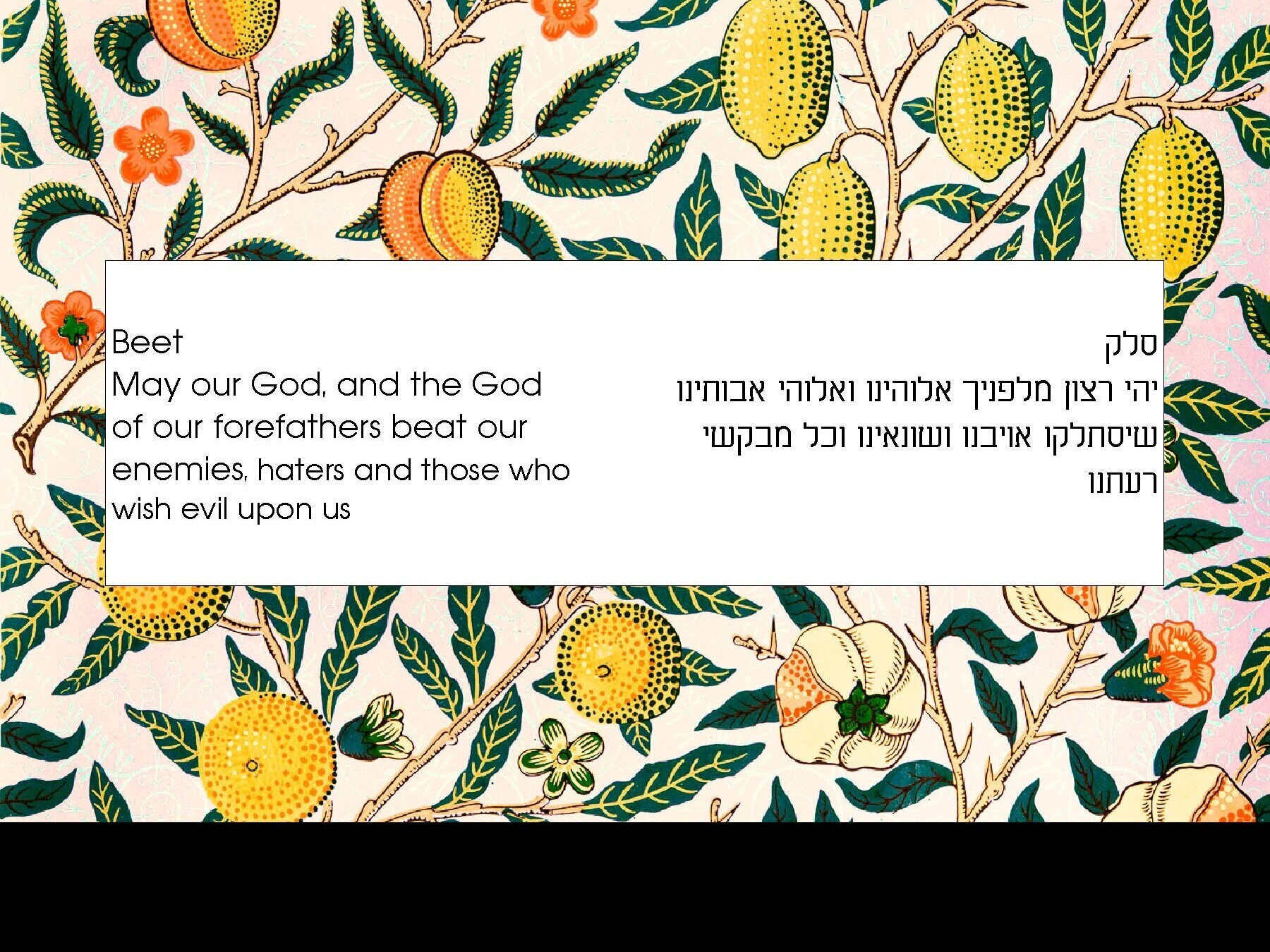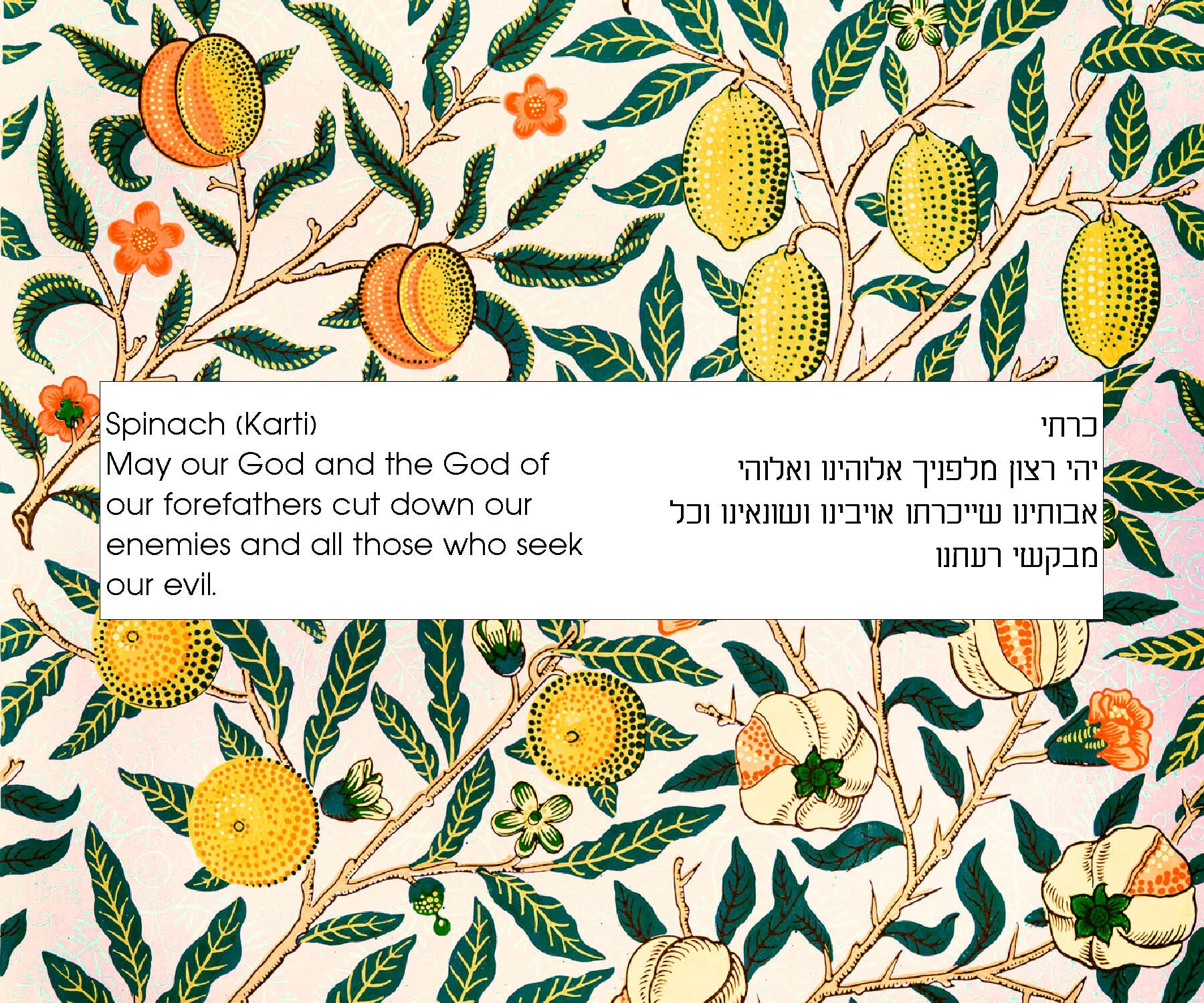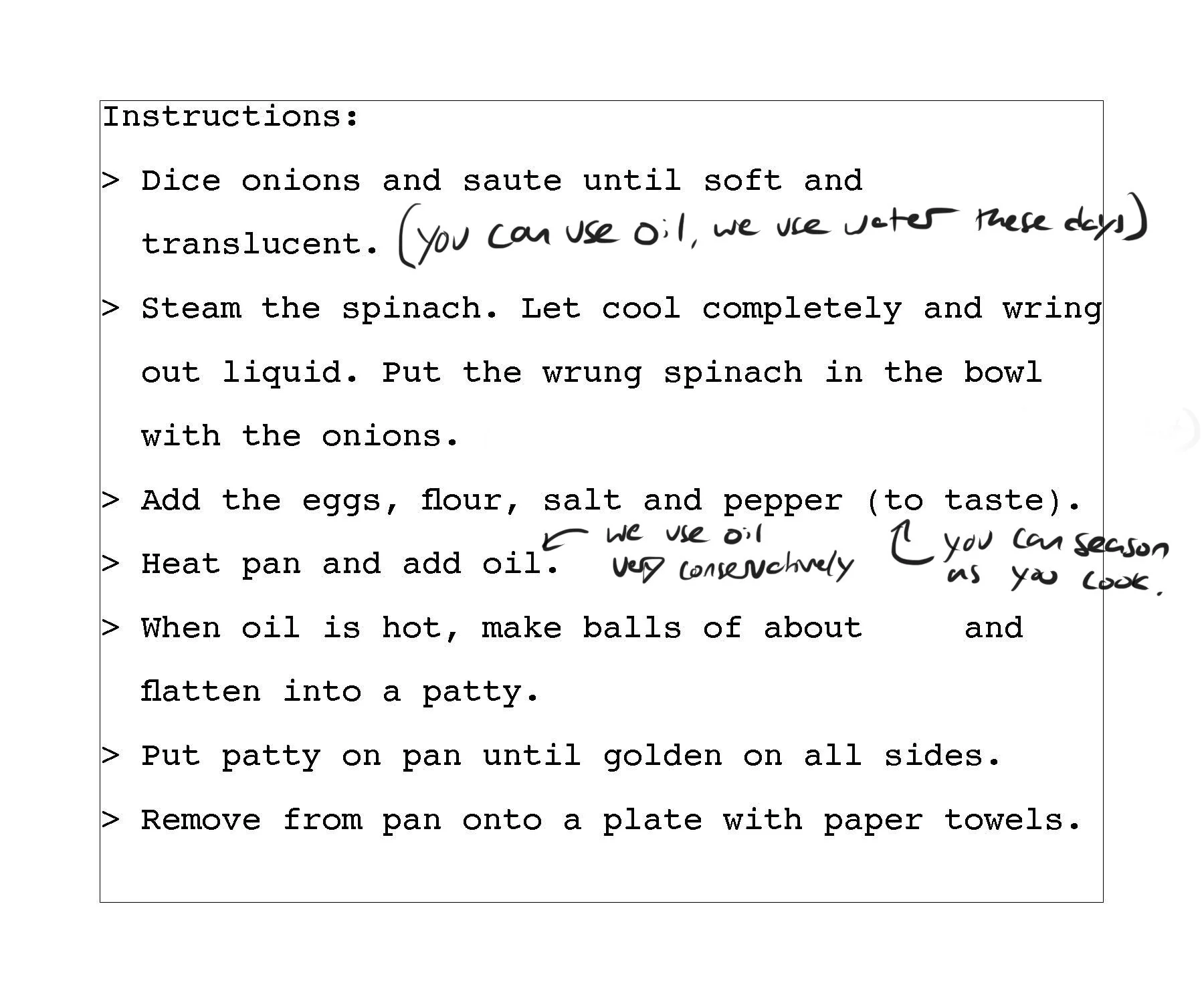Recipe: Spinach Patties (a taste of 1948)
This is a simple recipe we often make for Rosh HaShana.
As part of this holiday (the Jewish celebration of the new year), my family gets together to sample from a menu of symbolic foods. Some are traditional like the circular sweet challah that symbolizes the cyclicality of the year. Or apple (so we smell like apples) and apple with honey (so we have a sweet new year). Others include:




It’s a dinner of silly joys, inside jokes, and bilingual humor.
Spinach is one of the traditional symbols.
I share this recipe with you as one of my all-time favorites. And simple too! We don’t bother with complex recipes in this household. Originally, it is another of Savta Bracha’s recipes, one from her childhood home from the days of the siege on Jerusalem in 1948.
It seems that a recipe never really existed for this dish -- It has always been “winged.”
Savta Bracha tells:
In the time of the war, only she and her younger brother Yogli were at home with her mother. David and Shim’on were in the Hagana. Eli was in the Palmach. Yosef was at the Dead Sea, protecting the factories. Rahamim, who was only 16 years old, and too young to fight, contributed too by building fortifications.
One morning, as Rahamim was planning to go build fortifications, he went up to the living quarters from the basement shelter where they spent most of their time to make a cup of tea. The kitchen was located outside of the house (as was common in those days). Just as he was about to leave the house and enter the kitchen, he heard the whistle of a shell. He just managed to make it back to the house when the shell hit the kitchen. In the basement, Savta Bracha, Yogli, and Savta Hana could only hear the explosion and knew it fell close. They didn’t know how close until they heard Rahamim shout “Ima, Ima, I am alive!” They immediately came up to see him. The destruction was astounding, as was the miracle before them: Rahamim, unharmed.
The hole in the kitchen (Yogli, Savta Bracha, Savta Hana).
In those days, they would only leave the shelter when they heard the siren signaling a break in the fighting. They would use that time to run to the nearby store to collect their rations: 165 gram of bread per person per day, and a bit of oil, sugar, and flour. That was also the time they left quickly for the fields to collect wild edible plants like hyssop, white micromeria, and sage. Most significant in my story are the leaves of mallow (malva, hubeza) they collected, from which Savta Hana would make patties.
Patties in which, today, we substitute spinach for mallow.
Despite its humble origins in a story of lack and want, this recipe is a delicacy for my family. When we make it, we entertain no leftovers. We may not be collecting leaves in abandoned building lots, but we are the descendants of that story.
As a family, we have travel far and accumulated much history. Our holiday spreads are mixtures of traditions and stories. Our meatball soup hails from Iran, our haroset from Germany, we add to it ourselves - puns like Peas for world peace, dates for lots of dates, peaches for impeachment - evolving (living?).
Steeped in history and the stories we tell, our constructed and established histories become more and more mythical. My grandmother, Savta Bracha, is the most mythical of them all.
One of the eleven.




